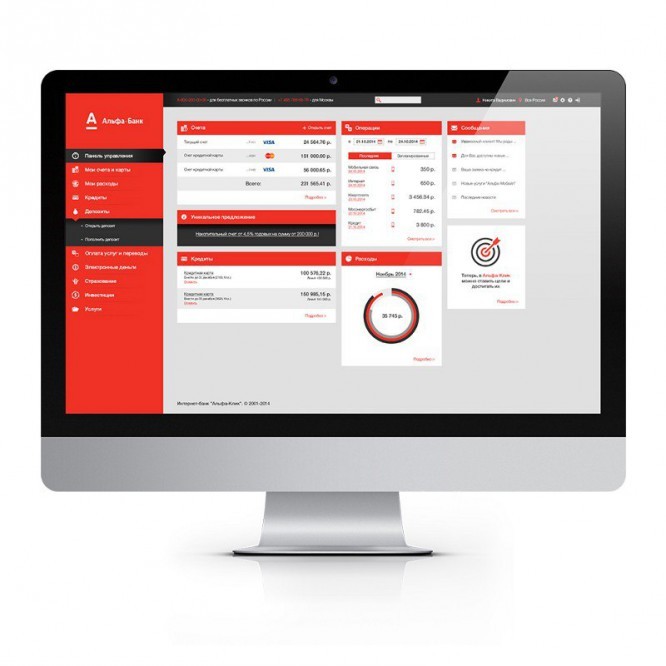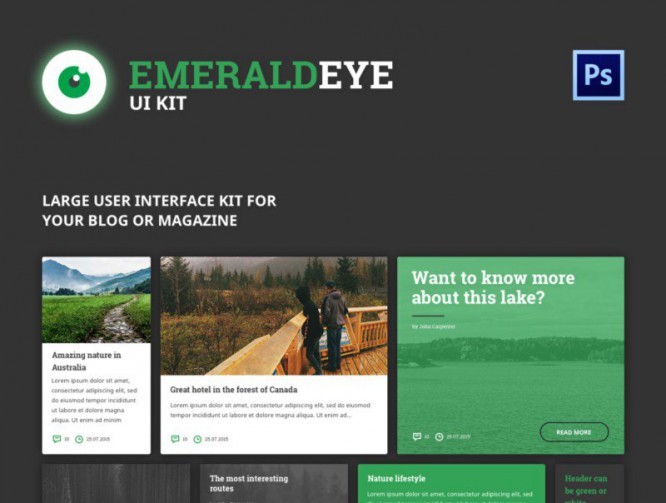5 designer tips for finding the right employer
5 designer tips for finding the right employer
Hello everyone, my name is Nick, I am 28 years old and I live and work in Moscow. I am an interface designer at Bradbury Lab.
I didn’t immediately understand what I wanted to do, so I tried various professions: from a courier to a system administrator. It was my hobby for system administration that gradually led me to get carried away with design, namely the design and design of interfaces.
He did not receive higher education, did not go to any specialized courses. I just wandered around the internet and studied what interested me. Of course, not everything worked out right away. I’m not going to tell you about the lengthy learning process – it’s not very interesting. But looking for a job and employers is another matter.

The first steps
Having exhausted my skills in system administration in the company where I worked at that time, I had only two development paths: to look for a job in the field of design that was interesting to me, or to continue to engage in administration.
The second option was the most convenient, since it allowed me to quickly find a high-paying job with conditions convenient for me, but I realized that this was not my way. Therefore, after spending a certain amount of time, I built a small portfolio that consisted of 6 projects.
Only one of them was real, all the rest are a figment of my imagination. Then I created a resume and started clicking. Click and apply for the vacancies I am interested in. This list included both large companies and startups. I understood that, having no experience in the field of design, getting into a large company is something unrealistic, but I tried anyway. Pretty soon my thoughts were confirmed: I had not yet grown to large companies. In smaller companies, reaching the final stage of the interview, I lost only for one reason – the lack of real projects.
This was aggravated by the fact that I often could not fully answer questions about one or another of my projects in my portfolio.
My cases were not completed, I had no experience in this area, I could not answer questions about my own work. It couldn’t be worse. Is not it? But this is only one step in my development as a designer.
Given these shortcomings, I came to the following:
Tip 1. Analyze each of your projects
Before presenting your projects to an employer, you need to think through every detail of your case and, if necessary, write down its history. It should be more than just fun. It is important to remember that your case is not just a WOW picture, it is a solution to a particular problem. Tell your employer about it.
I will cite two stories from personal experience as an example.
Redesign of the Alfa-Click website
I myself am a user of this service. When I was offered to try out the new interface, I gladly took up this business, expecting something new, interesting and easy to use. Although, pretty soon my positive attitude faded away. The new service did not meet my expectations. It was uncomfortable and did not evoke any desire to use it. Somewhere there were remnants of the old design, somewhere there were shadows and volume. In general, all those things that the whole world tried to refuse.

Having studied the new service in detail and taking into account all its shortcomings, I decided to create my own concept. It included a vertical side menu that greatly simplified navigation, and it was a kind of dashboard in the corporate colors of the bank.
The vertical sidebar increased the user’s workspace, given the aspect ratios of modern monitors, and did not eat up it, as is the case with the horizontal one. The complete project is available on Behance.
Geek’s Apparell Apparel Brand
That is the only real case in my portfolio. I developed it completely from scratch. Starting with an idea and a business plan, ending with test samples of T-shirts. I have had experience of working with emerging brands of clothing and baseball caps. I conducted polls in the social. networks and on Habré, received positive reviews about not even finished products. Received recognition from organizations such as GeekPicnic and IT-bar Klyuch.

But due to personal circumstances, the project had to be frozen. It is quite possible that I will return to him. And I was able to do all this in my free time. The full project can be seen on Behance.
Tip 2. Employers love real cases
In other words, getting a job without experience in this area is something incredible. When you are just starting to design, it is quite difficult to get a real order, but this is not a reason to be upset. You can design a mailer app, enlist the help of a developer friend, and upload it to the app store. As a result – not a complicated application, but it is real and is in your portfolio.
Unfortunately, I was not able to bring this to life, since at that time I did not have any familiar developers in this field at all.
I don’t know what exactly worked in my case (maybe this is the merit of a real case that was in my portfolio), but after a long search for work, I eventually got the position of an interface designer in one of the startups. My responsibilities included: developing a new interface for a web service, developing interfaces for a mobile application, a little work with presentations. I was very glad that I had such an opportunity.
But one condition appeared: a complete ban on creating my projects outside of working hours, since, according to employers, this could interfere with my main job.
Nevertheless, this did not affect my joy so much. After all, I finally got what I have been pursuing for so long and persistently – real work experience in the field that I like.
After some time working with the old interface and only presentations (there was no smell of the new interface yet), I came to the following two conclusions:
Tip 3. Ask more questions to the employer
Many, as soon as they hear the amount of wages, immediately forget about everything and are ready to instantly take up work. This is one of the biggest mistakes people make. Believe me, it will be hard for you to work, relying only on high wages. So why not immediately stipulate all kinds of pitfalls and, thereby, make your life a little easier. Don’t be afraid to ask.
Ask your employer questions. This will help you avoid what I had to face. Not being able to devote my free time to creating my own projects, I lost the opportunity to engage in self-development. Who is this employee who is prohibited from self-development? After all, the advantages are obvious. It is developing, which means it will be able to bring more to the company. He will be more competent in certain matters.
Tip 4. Experience is the most important thing
Whatever it is, it is valuable. It is thanks to him that you improve in your profession, becoming better and better every time. Despite the difficulties that I faced at that stage of my life, I am very glad that everything turned out exactly this way, and not otherwise. In just a few months, I significantly improved my skills (in this area) and gained tremendous experience working in the profession.
Development
After some time, I changed my place of work, while continuing to constantly develop and create new projects. I got carried away with UI Kits.
The Dribbble MeetUp conference fueled even more interest in them. In my opinion, this is a great way to improve yourself as a designer and interface designer. After examining all kinds of Internet resources, I noted for myself UI8 and Designmodo Market.
These are two marketplaces that sell designer tools. Getting there is quite difficult because they have a very strict selection for sale. It was more realistic for me to get to such sites as: Creative market, 2Bundles, Envato, but I set myself a goal – to qualify for UI8 and Designmodo market.
After six months and dozens of sketches, I released my first small Emerald Eye UI Kit for blogs, which was published on UI8. I was just getting started with Sketch, so this kit was created only for Adobe Photoshop.

This was a very important step for me as a designer. I realized that I not only do what I like, but also create what is really in demand for other people and I succeed.
Like many of you, I am quite critical of all my work. I always see that somewhere it was possible to do this and not otherwise, I find other ways to solve the tasks. Without this, nowhere. I develop and grow in this area, and my whales change with me.
Soon I will publish the next whale, which can fully be called a product, and not just a cool picture that is easy to work with. After all, a whale, like a brand, has its own idea, history and mood.
At the end of this article, I want to say just one thing.
Advice 5. Develop and do not be afraid, you will definitely succeed
Author: Nick Parker
Source: megamozg
Cover photo and article: ShutterStock
…
